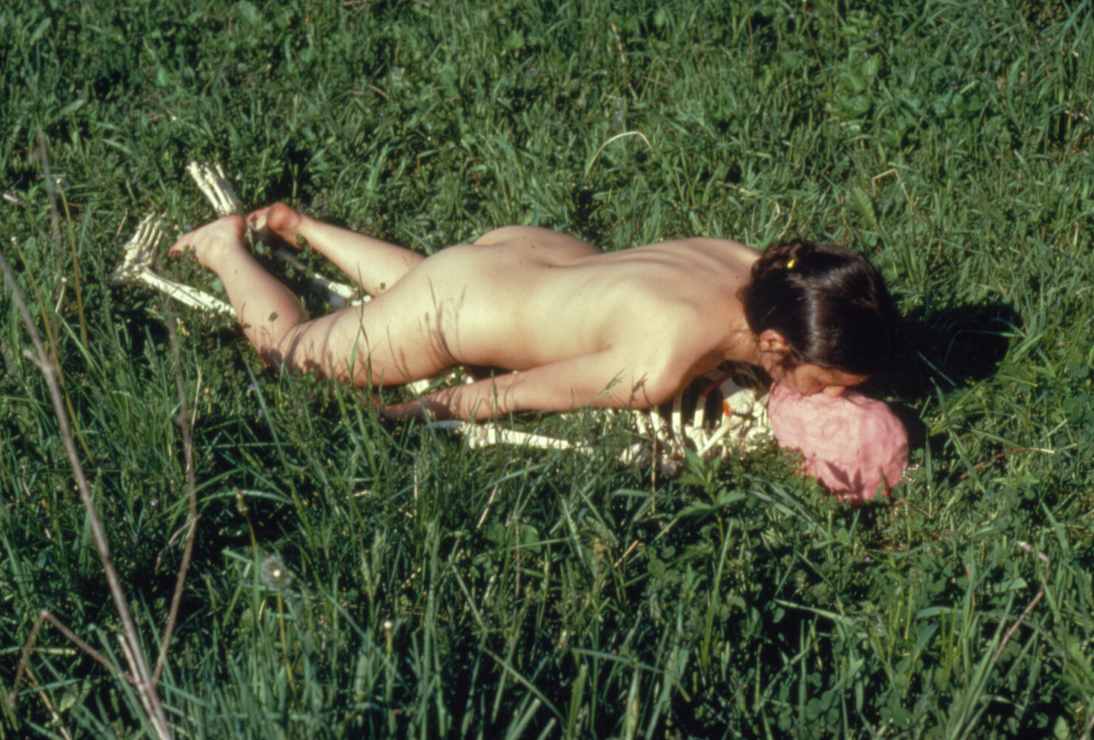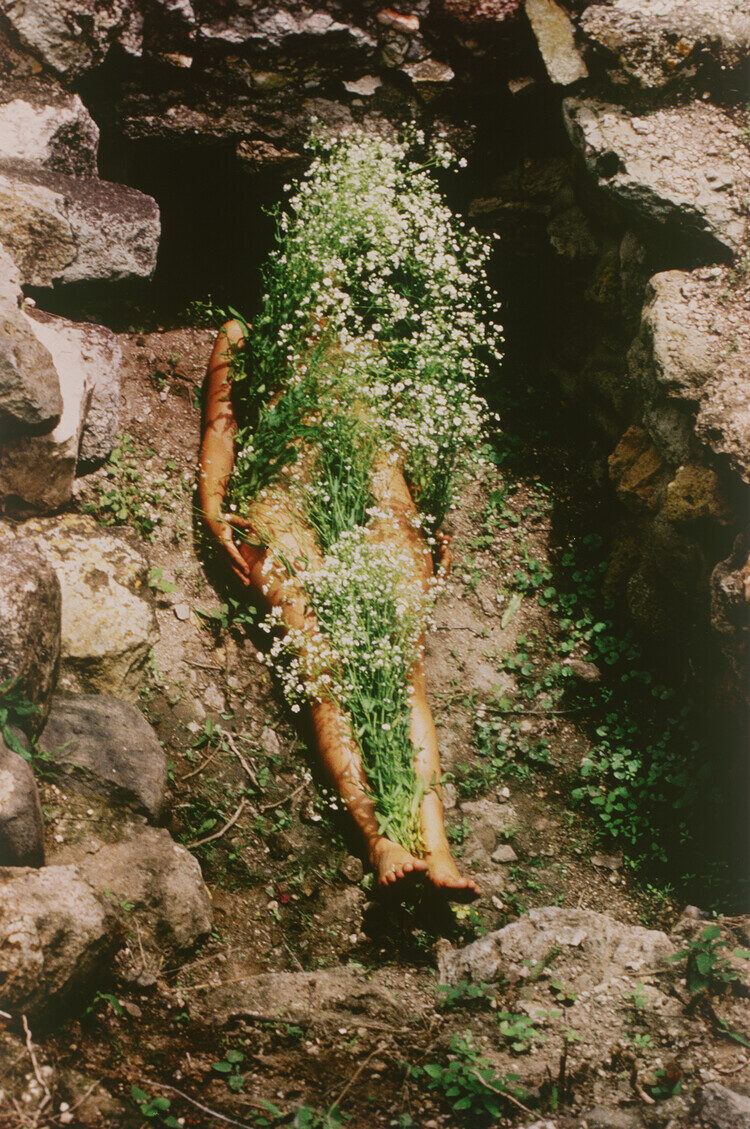Ana Mendieta’s work is as much about life as it is about death. Attuned to the sacred bond between bodies and land, Mendieta regarded nature as a sensitive and emotive force entangled in culture and politics—a messy assemblage of energies and ideologies embedded in life and soil, crossing borders and spanning timelines. These forces can be traced in earth’s geological terrain and detected in its simultaneous containment of the past, present, and future—a landscape where death and life continually bloom and wither like an accordion tune. Mendieta states, “My works are the irrigation veins of this universal fluid. Through them ascend the ancestral sap, the original beliefs, the primordial accumulations, the unconscious thoughts that animate the world.” These words describe a worldview that is vibrational and sensitive to the energies of life’s currents, and yet, Mendieta’s legacy is largely defined by her death and the decades of protest that have followed.
The artist Jose Muñoz asks, “what is attempted when one looks for Ana Mendieta? What does her loss signify in the here and now?” Muñoz’s questions were present in my mind when I heard curator and art historian Helen Molesworth was the host of “Death of an Artist,” a new podcast about Mendieta. The art world rarely appears in mainstream media, but when it does, it almost always comes with a spectacularized headline. I felt suspect when I saw the thumbnail graphic for the podcast, which features an image of Mendieta’s young smiling face beaming with ambition, with the cryptic title overlaid before her and the whole image adorned with thick Tarantino-red brushstrokes. All of this gave me pause and discomfort, especially in the absence of her name and the looming presence of the word Death. I’m generally uneasy with the growing genre of the “true crime” podcast, suspect of the agendas that intend to capitalize off of the sensationalized, sexualized, and dramatized stories of violence inflicted on women (especially women of color). Molesworth (an undoubtedly excellent storyteller) begins by stating her intentions to tell Mendieta’s whole story “all the way to its shocking and troubling end…a story the art world would prefer I didn’t tell.” (Spoken in a tone that feels perfectly at home among the “true crime” zeitgeist).

Ana Mendieta, “On Giving Life,” 1975. © The Estate of Ana Mendieta Collection, LLC.
Molesworth appropriately asks the exhausted question: can and should we separate the artist’s life from the art? How critics and curators frame Mendieta’s oeuvre is especially important, considering most of the work we see today was never actually exhibited during her lifetime—she didn’t have a chance to frame these critical conversations that shape her legacy. How can we acknowledge the injustice of her death while also creating space for expansive and nuanced discourse? I don’t claim to have the answer, and I’m left with the persistent conundrum surrounding the canonization of her work, which artist Coco Fusco says, “has nothing to do with how she lived,” arguing that ”in an art world willing to congratulate itself for championing overlooked and maligned women, we must also acknowledge—as curators, viewers, writers, collectors, dealers and protesters—the possibility that we may be complicit in a collective type of abuse…How do we remember Mendieta without viewing her practice solely through the lens of her death?” Fusco’s words resonate with the uneasy feeling that sat in the pit of my stomach throughout the podcast. The art world remains fixated on the horror of her death—telling her heartbreaking story time and time again, creating a mythological version of Mendieta, petrified by the violence carried out against her.
It’s hard to ignore the circumstances I suddenly found myself in mid-way through this critical response. As I finish this draft, I’m writing from the hospital waiting room where a lifelong friend sits beside me in pain from the abuse inflicted by her boyfriend. I am filled with sadness and rage as we wait for the nurse to examine and document my friend’s wounds. This experience brought the tragic reality to the surface: Mendieta’s death is no “mystery” but an all too familiar story of violence that ends in the worst possible manner. While Molesworth’s podcast raises awareness of this injustice, at what cost does it do so? Mendieta’s art and life are mentioned, but they feel like lengthy footnotes, marginalia to the bigger death story. I want to put forth another kind of call to justice: Considering Ana Mendieta as an artist and a person that, like all of us, is multifaceted, particular, and mercurial; one who made work about death, as well as about life and rebirth.


